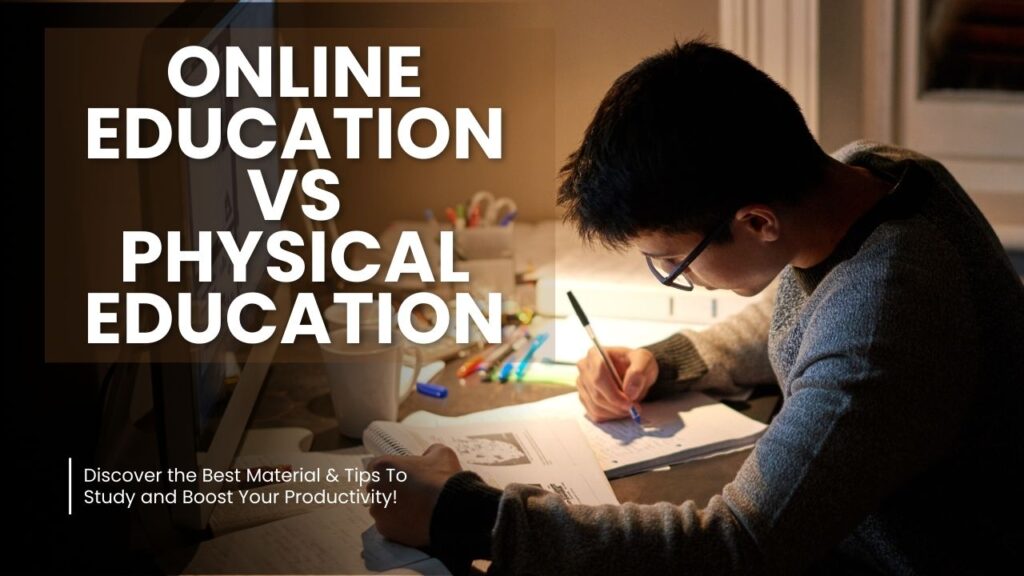Discover Online Education VS Physical Education in Pakistan : compare accessibility, costs, and benefits to understand the future of learning.
Over the last few years, the Pakistani education system has experienced an unprecedented transformation caused by rapid technological innovation, and exceptional challenges from the COVID-19 pandemic. Out of this transformation a critical and heated conversation that has emerged, is the comparison between Online Education and Physical Education.
This debate is not merely based on preference, but instead consider individuals’ access to learning, the quality of learning, and the future of learning in the country, where education is recognized as a constitutional right and, yet an ongoing struggle. With an estimated 22.7 million children out of school, and a literacy rate of approximately 60%, Pakistan faces significant challenges in providing equitable education.
The emergence and accessibility of e-learning platforms, and resilience of the physical classroom, now raises questions about, which model, or multiple, could better serve the diversity of our population.
The COVID-19 pandemic expedited the growth of online learning domestically and across the world practically overnight. Suddenly tools like Zoom, Google Classroom, and Microsoft Teams became mainstream.
The Higher Education Commission’s partnership with Coursera and the Virtual University have also broadened the doors to digital education; conversely, physical education is still entrenched in Pakistan’s learning culture, in terms of its regimented format and face-to-face engagement in a disciplined and social setting for mentorship.
Nevertheless, limited infrastructure, unevenness across regions, and cultural gulfs can get in the way of a healthy balance between learning modes as online and physical education have both strengths and weaknesses.
Article 25-A of the Constitution of Pakistan guarantees free education for children between 5-16 years, but actualizing this constitutional guarantee necessitates coming to grips with the plusses and minuses of conventional and online education modes.
This paper studies the protentional of Online Education VS Physical Education in Pakistan by focusing on access, price, effectiveness, and impact on society.
Using comparative analysis of opportunities and obstacles, the authors draw upon real life examples to analyze how both education models shape education in Pakistan.
In terms of developing the best of both worlds, ensuring equitable learning for all, whether it is online flexibility or human connections in face-to-face classrooms, the future of education in Pakistan is tied to improving the combined potential of both forms of education.
| Category | Online Education | Physical Education |
| Access and Reach | 78.38 million internet users in Pakistan (2025), but only 33% of households have internet access, limiting reach, especially in rural areas. Digital divide affects 25% of low-income students with limited tech access. | 22.8 million children out of school, primarily in rural areas due to lack of infrastructure. Urban schools more accessible but overcrowded. |
| Cost | Reduces costs by eliminating physical infrastructure needs. Average revenue per user for online degrees in the USA (indicative of global trends) is $21,000 in 2023. In Pakistan, 20% cut in school fees during lockdowns highlights affordability. | Private schools charge high fees, while public schools, meant to be free, lack resources. Economic cost higher in urban private schools. |
| Quality of Education | 70% of students globally believe online learning is better than traditional classrooms due to flexibility and personalized learning. 81% report improved grades with well-designed courses. However, only 47% of faculty in Pakistan trained for online teaching, impacting quality. | Rote learning dominates, stifling critical thinking. Outdated curricula and lack of teacher training prevalent. Only 55% of grade 5 students can read a simple Urdu story. |
| Gender Equity | UNICEF’s Learning Passport program shows 90% female users, narrowing the digital gender divide. However, girls face barriers due to limited internet and device access in rural areas. | 44% of girls attend school compared to 56% of boys. Infrastructure issues and safety concerns limit girls’ access, especially in rural areas. |
| Infrastructure Needs | Requires reliable internet and devices. 150 million mobile phone users, but digital divide persists with low ICT skills in rural areas. | Over 30,000 schools damaged in 2022 floods, highlighting fragile infrastructure. Rural schools lack basic facilities like classrooms and sanitation. |
| Learning Outcomes | Online learning can reduce learning time by 40-60% and improve retention by up to 50%. 85% of students report enhanced critical thinking and problem-solving skills. | 48% of grade 5 students can solve basic two-digit division, indicating poor learning outcomes due to systemic inequities and rote learning. |
| Scalability | Global e-learning market projected to reach $740.46 billion by 2032, with Pakistan adopting platforms like Google Classroom and Quizlet. Scalable but limited by digital divide. | Limited scalability due to funding (2.4% GDP on education) and infrastructure constraints. Low-cost private schools show potential but favor boys. |
| Pandemic Impact | COVID-19 accelerated online adoption, with virtual school enrollment doubling from 293,689 in 2019-20 to 590,267 in 2020-21 globally. Pakistan’s universities transitioned to online, but digital access issues persisted. | Over 90% of global students affected by school closures. In Pakistan, physical closures disrupted education, especially for marginalized groups. |
| Teacher Training | Only 47% of faculty trained for online teaching, leading to inconsistent quality. AI and ML tools emerging to support teachers but still in early stages in Pakistan. | Many teachers lack professional development. Low salaries and outdated methods hinder quality. |
| Student Engagement | 64% of students engage daily with online learning globally. AI chatbots and personalized learning improve engagement but require tech access. | High dropout rates due to unattractive learning environments, poverty, and child labor. Lack of interactive teaching methods. |


Table of Contents
Overview of Education in Pakistan
In order to comprehend all the dynamics of Online Education VS Physical Education (PE) in Pakistan, it is important to first look at the big picture of education in the country as a whole. Major challenges and opportunities in the field of education exist in Pakistan, not only in relation to the population diversity but because inequitable education access occurs from region to region and this is escalating in the domain of electronic technology.
The literacy rate is at only approximately 60%, where the dichotomy of urban versus rural areas are drastically different from each other. Understanding the schooling context, traditional physical education structure, and online learning as a new opportunity, will help develop a view of how online education has an enormous effect on education today.
Current State of Education
Pakistan’s education system supports a population of over 240 million people, with approximately 25 million children in the primary education system. More frighteningly, 22.7 million children are out of school, especially in rural areas and under-served communities.
The Constitution of Pakistan provides for free and compulsory education for all children aged 5 – 16 under Article 25-A. However, education provision acts differently depending on the province because there is no equal depth of governance and administration in all areas following the 18th Amendment in 2010.
Urban areas are relatively better off on the whole in terms of infrastructure and private schools, and rural areas are far poorer in terms of schools, trained teachers, and facility amenities. Gender also plays a role in educational disparity, as cultural values in some parts of Pakistan block girls’ educational opportunities.
These challenges outlay a relevant context for comparing Online Education VS Physical Education, as each model addresses factors of access and quality.


Traditional Physical Education
In Pakistan, the national system of physical education operates through a sequence of levels: primary ( grades 1-5), middle (6-8), secondary (9-10), and higher secondary (11-12) levels.
Students take national standardized exams, such as the Secondary School Certificate (SSC) and Higher Secondary School Certificate (HSSC), which provide indications for educational or career pathways. The curriculum consists of mandatory subjects (e.g. Urdu, English, Islamic Studies, Pakistan Studies), and optional subjects that include a selection of sciences, arts, or technical subjects.
The physical classroom allows for the instillation of discipline, socialisation and leadership among students through group work, debates, and extracurricular programs. Cadet colleges and public school systems stress character-building and teamwork within the structure of the physical educational system, and as such, physical education is an integral part of holistic development and student identity development.
However, real issues like overuse of traditional pedagogies and a lack of resources are limitations in many cases.



Emergence of Online Education
The emergence of online education in Pakistan has been greatly supported by advancements in technology and the increasingly urgent need for alternative educational pathways, particularly during the pandemic.
Although education institutions like the Virtual University of Pakistan and Allama Iqbal Open University offered distance learning for some time; it wasn’t until COVID-19 prompted educational institutions in Pakistan to use distance learning that the adoption of educational tools like Zoom, Google Classroom, and Microsoft Teams surged.
Other efforts initiated by the government like the Higher Education Commission’s partnership with Coursera and the Prime Minister’s Laptop Scheme incentivized other institutions and educators to consider the benefits of distance learning while programs like UNICEF’s Learning Passport focused solely on marginalized groups.
Then, the Presidential Initiative for Artificial Intelligence and Computing (PIAIC) and DigiSkills drove home the point about technological education to student populations in Pakistan to access global job markets rather than limited local ones.
Notwithstanding the advancement of online education, hurdles such as limited access to the internet and limited digital literacy remain part of the conversation, especially when comparing the benefits of Online Education VS Physical Education.
This overview reinforces the complexities of Pakistan’s education system, where brick-and-mortar education is deeply-rooted compared to the rapidly-growing potential of online education. The specifics of how these spheres intersect will continue to be part of fresh debate, informing us on how to educate youth in Pakistan in a rapidly-changing world.
Online Education: Advantages and Challenges
In Pakistan, shifts in learning models are delineated by changes in the education system, and online education has quickly become regarded as a revolutionary model of education.
The Online Education VS Physical Education debate focuses primarily on the purpose of both, their accessibility, quality, and the social aspects. Online education relies on digital and connected learning, producing unique possibilities for outreach beyond geographic and class divides.
But there are also obstacles in online learning that hinder its application and ultimately usefulness in a developing and multidimensional country. Here we discuss the contemporary trends in online education and the related advantages and disadvantages to Pakistan, addressing the role that it might play in the future of learning in Pakistan.
Advantages of Online Education
The advent of online education in Pakistan has transformed how knowledge is conveyed and offers numerous benefits relevant to the need for inclusive and flexible learning alternatives.
Accessibility :
One of the key benefits of online education is accessibility for students in rural or under-served areas. If connectivity is available, any student in remote regions such as Balochistan or Gilgit-Baltistan can now access amazing resources through the Virtual University or UNICEF’s Learning Passport. Online education can fill the gap where schools are scarce or difficult to access yet offer access to real educational content.
Affordability :
Online education can reduce costs associated with brick and mortar schools, such as travel time and cost, accommodation, and facility maintenance. For students, it can relieve transportation and educational material costs, making education more feasible for under-privileged families.
Flexibility :
Online platforms provide access to asynchronous studies, allowing students to learn at a pace that works for them, when it works for them. This format benefits working students, women who take care of household responsibilities, and students attending to multiple considerations, permitting a more personalized learning experience.
Technological Adoption :
Online learning develops digital literacy, an important skill set in a technology-centric world. Programs like the Presidential Initiative for Artificial Intelligence and Computing (PIAIC) and DigiSkills teach students specialized skills needed to develop a meaningful career in AI, freelancing, and software development that can lead to employment projects internationally.
Gender Equity :
In areas where cultural norms restrict mobility for girls, online education is a form of learning that minimizes danger and can be easily accessible. Initiatives such as UNICEF’s Learning Passport (in Sindh) have done wonders for thousands of girls by providing education in the safety of their own homes.
These features describe why this modern form of education can be a really positive addition to the discussion of Online Education VS Physical Education, especially for addressing some of the challenges of accessibility and gender equity in Pakistan.
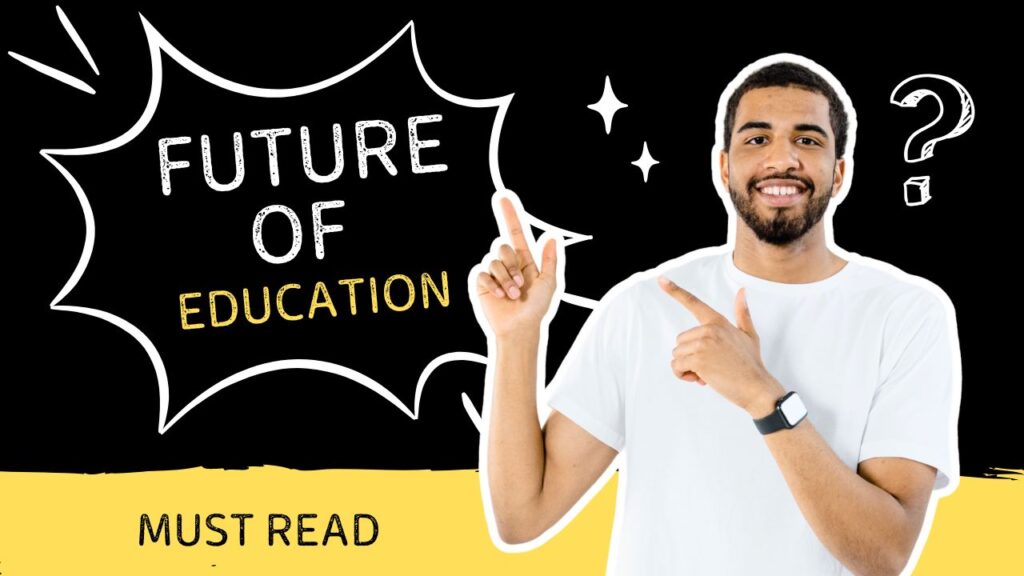
The Future Of Education In Pakistan : How I Experienced the Digital E-Learning Boom Firsthand
Challenges of Online Education
Online education in Pakistan has the potential for sustainable growth, but education systems face complex obstacles, making it difficult to apply or sustain its use.
Infrastructure limitations :
While internet connectivity is increasing, approximately One-third of households in Pakistan have reliable internet access. Network coverage and power outages remain obstacles to internet connectivity, particularly in rural areas where infrastructure is limited.
Technical skills gap :
Regardless of the increase in internet connectivity, the majority of students and teachers in Pakistan simply do not have the digital literacy required to properly use and maneuver through a consistent e-learning experience. From scheduling online meetings using software like Zoom to troubleshooting technical issues, the inconvenience of the learning curve can impede online instruction for both faculty and students, especially since many middle-aged and older educators did not receive post-secondary instruction in an online format.
Engagement issues :
When comparing, online education systems find it difficult to sustain a student motivation to learn as education in a classroom, where social interaction occurs and a student identity can be formed. This social aspect of learning can result in the appearance of low participation and discipline routines in an online classroom, when it may simply be more difficult for the students to engage and participate in the online education.
Mental health :
Finally, prolonged and continued screen time, isolation and a swift switch to online set-ups will create mental health concerns. Students reported mental health concerns including screen fatigue and stress to anxiety, as did faculty and educators, especially during the COVID-19 pandemic, when all forms of education was being delivered online.
Quality Concerns :
The perception that online programs have less academic rigor is continuing and some employers and institutions question online degrees as valid. Ensuring comparable quality and accreditation is a challenge for e-learning providers.
These issues represent the complexities of scaling online education in Pakistan, especially relative to the more structured environment of physical education. These issues must be addressed so as to leverage online learning in the overall landscape of Online Education VS Physical Education.
Considering these aforementioned advantages and challenges, it is clear that online education can be uniquely disruptive, but it requires considerable investment into infrastructure and training for it to positively rival traditional classrooms. In this next section we will consider the strengths and limitations of physical education, in order to further clarify our comparison.
Physical Education: Advantages and Challenges
In the continuing debate of Online Education VS Physical Education in Pakistan, physical education in traditional physical classrooms continues to be one of the key components of the educational ecosystem. Physical education was designed to foster in-person instruction and methods for providing students with a respected medium of learning. The physical education industry has facilitated the academic and social development of millions of students.
From public education to elite cadet colleges, physical education provides a means of discipline, cooperation, and all-around enhancement of students. Online education is still unable to fully capture the true essence of in-person learning in physical education.
Nevertheless, physical education does have some notable challenges, such as issues of access and antiquated methods, but it is important to highlight the limitations within physical education not only our ability to reach students and teach effectively with students of all types. This section will discuss the primary benefits and limitations of physical education in Pakistan, in order to provide a better understanding of the field in Pakistan and other countries.



Advantages of Physical Education
Physical education provides a variety of benefits that have contributed to its long-lasting popularity in Pakistan, especially in developing students to be well-rounded people prepared to take on both educational and social obstacles.
Social Development :
Physical classrooms provide students a multi-space for learning teamwork, communication, and leadership. Group projects, debates and extracurricular activities such as sports and drama clubs, allow students room to work with their peers and develop interpersonal skills which are necessary for personal and professional growth.
Discipline and Structure :
Daily routines and schedules in physical schools provide time management, accountability, punctuality and respect for authority. Daily schedules, uniform policies, classroom rules provide a level of structure and discipline that prepares students to be accountable and take responsibility as they move away from school and into the social and professional domain where adhering to rules is critical.
Teacher-Student Relationship :
Face to face interaction with a teacher allows students to receive direct feedback and direct mentorship that help meet the needs of individual students. This provides an opportunity to work through typical challenges facing students, such as anxiety leading into and during exams, developing public speaking skills, and improving overall communication skills, cannot be taught and developed as effectively in a virtual classroom.
Holistic Development :
Physical education takes into consideration physical activities such as playing games, sports and exercise as well as academic work, all in support of developing your mind and body. Contributions made by these students may include screenings of local films, science fairs, cultural festivals, and annual functions all contributing to developing creativity and confidence.
Standardized Assessments :
National assessments such as the Secondary School Certificate (SSC) and Higher Secondary School Certificate (HSSC) enable learners to have a common lens for assessment, standardized assessment frameworks also maintain rigor and, importantly have the same recognition to potential employers as well as universities.
These benefits demonstrate, why physical education is a preferred option for many options in Pakistan, its rich disposition towards learning and the flexibility of an online education aligns well within the context of Online Education VS Physical Education.
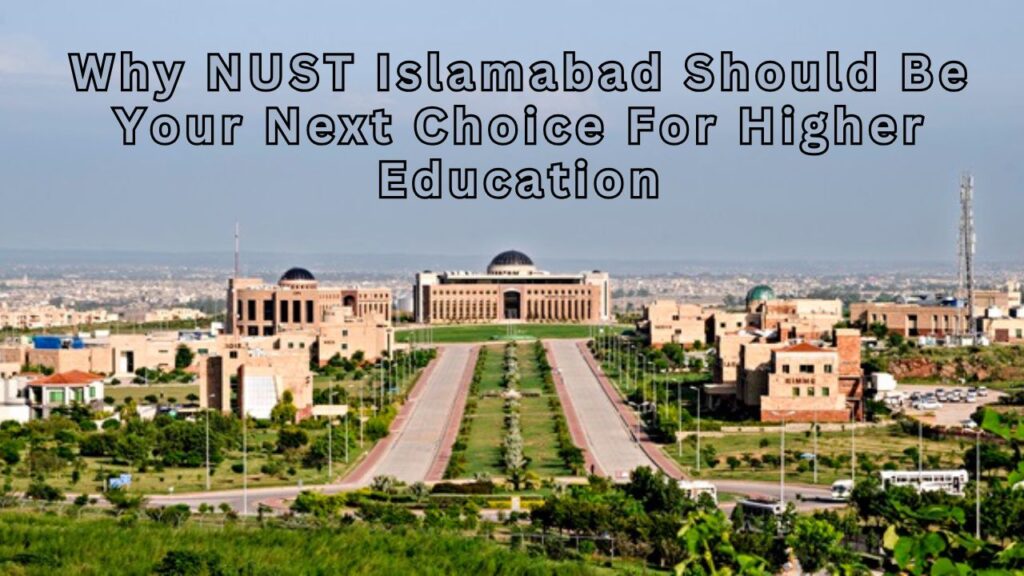
Why NUST Islamabad Should Be Your Next Choice for Higher Education
Challenges of Physical Education
Despite the advantages, physical education in Pakistan confronts several major barriers preventing physical education from being meaningful to all students, especially in a resource-limited context.
Access :
In rural and remote areas, the lack of schools means that many students are either required to travel several kilometers to attend school or simply do not attend at all. In hotspots such as Balochistan and Khyber Pakhtunkhwa, poor infrastructure and limited school coverage leaves marginalized communities with little access to meaningful education.
Costs :
Private schools are typically cited as having better facilities and better quality of teaching, however they charge exorbitant fees to attend (tuition, uniforms and extra-curricular activities). Public schools, on the other hand, still impose costs on poorer families (books, transport, and exam fees) leaving physical education less affordable than an online course.
Outdated Curriculum :
The curriculum for many physical schooling systems is based upon rote learning and theoretical knowledge, where students are not acquiring practice-based skills. Students are not equipped for today’s jobs, which are notably led by technology and/or digital based skills, and students have unhelpful syllabi and a lack of career counseling.
Safety Issues :
Issues with bullying and security, with reports of harassment in schools in some cases, proposes a significant challenge to student safety. These challenges greatly affect girls, whose enrollment is already limited by cultural and logistical challenges.
Teacher Shortage :
Factors such as low pay, no professional development, and lousy working conditions lead to an unequal supply of competent teachers. Once again this effects teaching, and student learning, as it particularly pertains to public schooling, where minimal supply issues buckle educational outcomes.
These challenges illustrate not only the limitations of physical education in terms of learning outcomes for Pakistan’s heterogeneous educational needs, but educational barriers when comparing the ease and cost-effectiveness of online education. They are the key issues we must address before we can consider strengthening the role of the physical classroom in the broader educational debate, Online Education VS Physical Education.
It is evident from comparing the characteristics of Online Education with Physical Education, that physical educational environments cultivate egocentric and social growth, but they must also advance, improving the plight of Physical Education stubbornly and unwillingly confronting systemic barriers.
Now it is time to explore what Online Education has to offer in a comparative model, and where both forms fit as either strength or weakness within the context of Pakistan.
Comparative Analysis: Online Education VS Physical Education
While the issue of Online Education versus Physical Education in Pakistan is not about “either/or”, it is far more about each model addressing the unique educational demands of Pakistan.
Pakistan’s literacy rate of only 60% and is still facing around 22.7 million children out of school, there are deep structural issues in providing accessible quality education in the country. Online education provides access and flexibility, whereas physical education provides structure and social experiences.
This section explores the two types of education in terms of access, cost, learning experience, skill development and impact on the community; and to compare the two for their unique strengths and weaknesses, and their potential to be synergized for the educational future Pakistani students needs.



Accessibility
Online Education : Online learning has the potential to surmount distance to deliver programs to places that would be unrealizable as long as the internet remains available. The Virtual University and UNICEF’s Learning Passport are examples of programmatic offerings that have allowed students in areas such as Balochistan or Gilgit-Baltistan to access courses while continuing to reside in their community.
Internet access is limited in these areas (connected households are only 33%) and most families do not have an associated device, limiting options for those in more remote or particularly rural areas.
Physical Education : Distance learning requires students to commute to schools, and this can be particularly challenging in undeveloped regions with few schools. Longer commutes and limited schools nearby prevent many from attending, especially girls in conservative or tribal areas. Urban was better but faced infrastructure barriers.
Cost
Online Education : Online education is usually less expensive – it eliminates costs related to travel, accommodation and physical infrastructure. Students can also access free or low-cost platforms such as Coursera (this is available to students through HEC partners) or DigiSkills, which can alleviate financial constraints for low-income families.
Physical Education : PE usually is more expensive, with private school fees, uniforms, textbooks, and travel (if the school facility is not within walking distance). Even public school programs are subsidized, but typically have incidental costs that may be a burden on low-income families, making PE not an option in many marginalized areas.
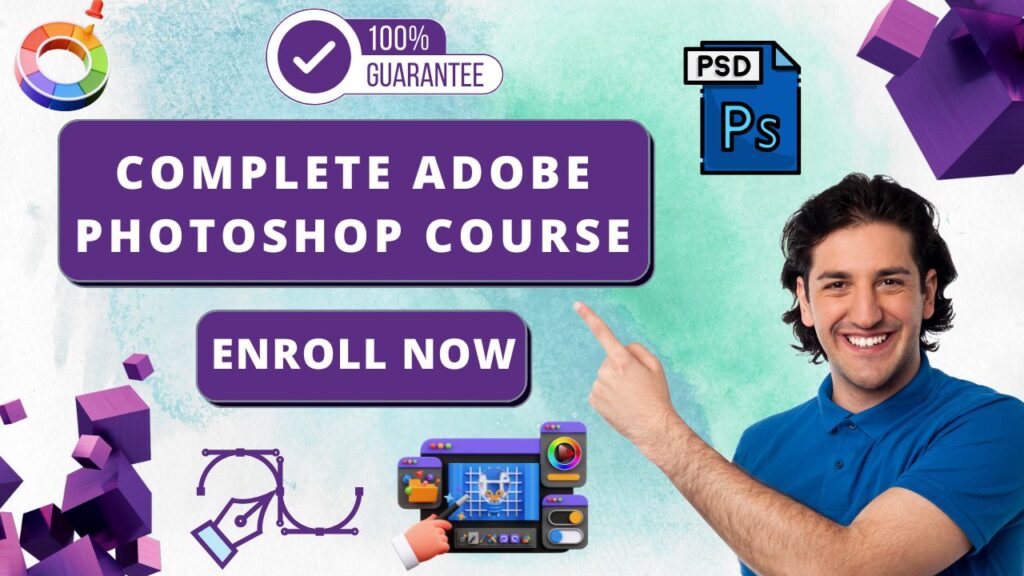

Learning Experience
Online Education : Online learning provides opportunities for students to learn at their own pace and fit education into their schedule. Asynchronous courses and recorded lectures accommodate different learning styles. While convenience may create challenges for learning face-to-face, personal engagement and motivation may take longer to achieve and lack opportunities for students to practice with hands-on or experiential learning.
Physical Education : physical learning experiences provide a structured environment for immediate engagement in the process of learning. Teachers create an engaged environment, guide learning tasks, provide direct instruction, instructional feedback, and share the student’s learning with other students.
However, teachers are still challenged by structuring learning towards each individual student’s requirements and learning pace. Physical environments can present structural rigidity for students who require differentiation to accommodate learning styles and pace adjustments.
Skill Development
Online Education : Online education is strong in developing digital literacy and technical skills – preparing students for technology-oriented occupations. Programs such as PIAIC emphasize artificial intelligence and computing careers – matching what is trending globally. However, one significant area where these online programs fall short is in developing soft skills such as collaborative work, team development, communication skills and leadership – all developed through social contact.
Physical Education : Physical education supports the development of soft skills through activities, debates and group work, establishing habits of responsibility, discipline, and interpersonal skills. However, in many places, physical education is not based on modern curricula, and many primary, secondary, and postsecondary programs are mainly based on rote learning, allowing minimal experiences related to modern technical skills, thus underprepared for entering the early phase of a digital economy.
Societal Impact
Online Education : Online education has unique advantages regarding inclusivity, especially with respect to safety for girls and marginalized groups, as it can be carried out in the comfort of their own home. Programs like UNICEF’s Learning Passport can cultivate and empower female students in conservative cultures. But the digital divide poses concerns that online learning may perpetuate inequalities, as many people don’t have internet access, computers, or devices to facilitate a relevant digital learning experience.
Physical Education : In person learning allows students to share educational experiences with others, which reinforce social norms and strengthen community ties. However, physical classrooms can also exclude marginalized students due to accessibility issues, especially for young women who may feel culturally excluded from the learning experience. Safety issues within physical classrooms, such as bullying or harassment, can further limit the spirit of community and inclusivity that educational settings can provide for students, especially young women.
What is now established by this comparative review of Online Education VS Physical Education is that each model has unique benefits and drawbacks. Online education has benefits in terms of access and cost-efficiency but suffers from student engagement and infrastructure issues. Similarly Physical education provides benefits in terms of social and personal growth but limit by access and cost issues.
By recognizing the distinction between models stakeholders can investigate hybrid models that offers the flexibility of online learning and the human connection of physical classrooms in efforts to create a more equitable and productive education system in Pakistan.
Case Studies and Examples
In order to truly contextualize the potential implications of Online Education VS Physical Education in Pakistan, it is necessary to look at some real world applications of these two approaches. Online and physical education has encountered successes and challenges in a variety of approaches, but both represent education’s potential to meet the needs of Pakistan.
From digital platforms engaging disenfranchised communities to conventional institutions developing leaders, these case studies illustrate the differences in educational learning spaces that each approach provides. This section highlights specifics that exemplify the positive potential and outcomes of online, physical, and hybrid education models in Pakistan.
Online Education Success: UNICEF’s Learning Passport in Sindh
UNICEF’s Learning Passport has kicked off in Sindh and shows how online education can really help in Pakistan. This digital platform aims to give quality education to kids who aren’t in school, reaching over 4,000 students so far, most of whom are girls from underserved areas.
They’ve handed out tablets with educational content to tackle issues like poor internet access and the cultural limits on girls getting out and about. The lessons cover reading, math, and life skills that fit local needs.
This effort is a good example of how online learning can make education more accessible and inclusive, especially for those who often get left behind. It’s clear that targeted programs are key to closing the educational gaps, but scaling this up is tough because of infrastructure issues.
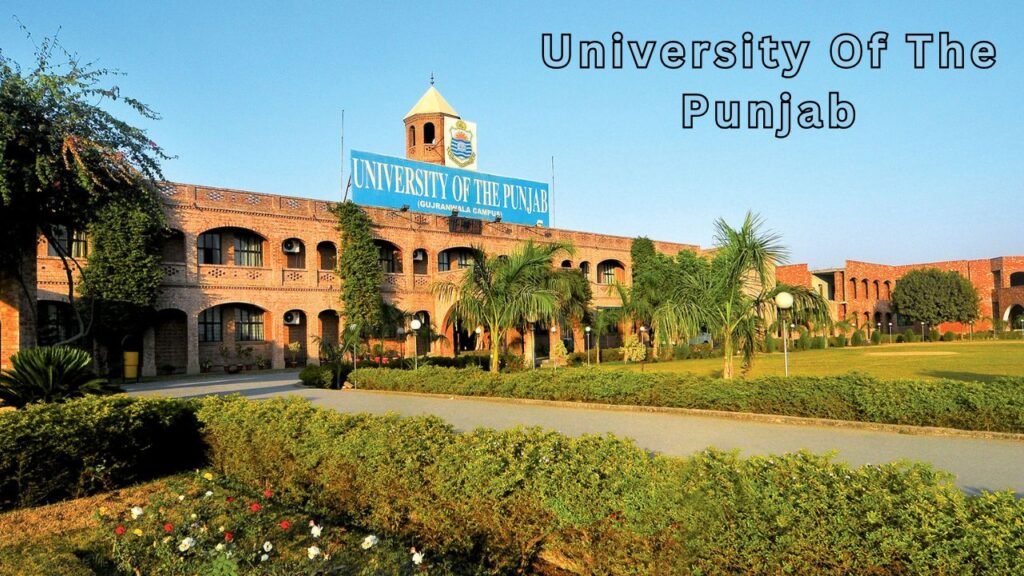
University Of The Punjab (PU) Lahore
Physical Education Impact: Public Schools and Cadet Colleges
Pakistan public schools and cadet colleges continue to demonstrate the intrinsic value of physical education to instill leadership and discipline.
Cadet colleges like Cadet College Hasan Abdal and Cadet College Petaro provide residential education that includes high-quality academics combined with extracurricular activities and engagement in sports, debating, and community service.
Cadet colleges graduate hundreds of young men and women yearly into the military, and civil service, and into professionals, many who credit their success to the organizational and supportive environment they experienced in a physical classroom environment. Although public schools are more affordable and possible for more students, they still use face-to-face education to influence the development of students’ social attributes such as resiliency and communication.
These examples speak to the reason that physical education continues to be part of the discussion in Online Education VS Physical Education, with respect to delivering a whole education experience, although there is some limitation due to access based on geography and financial situation.
Hybrid Models: Blended Learning in Private Universities
Since COVID, a lot of private universities in Pakistan, like LUMS and NUST, have started using hybrid learning. This mixes online classes with in-person education. For example, NUST’s engineering courses have online lectures for theory, but they also have on-campus labs and seminars for hands-on practice.
Tools like Microsoft Teams help students keep up with their lectures in a way that suits them, and labs give them a chance to get hands-on experience. This mix allows for some flexibility while still having in-person interaction, which is important for learning.
For instance, different education types like online, in-person, and hybrid are making strides in Pakistan to address various issues in the education system. Whether it’s making online learning accessible for girls or training future leaders in classrooms, each method has its perks. Blending these approaches seems to make education more inclusive and effective, especially with the ongoing talks about the best way to learn.
Future of Education in Pakistan
As Pakistan works to tackle its education issues, like the 60% literacy rate and 22.7 million kids not in school, there’s a growing conversation about online education versus physical classrooms. Both have their place and can actually work well together.
The fast growth of digital learning, along with the importance of traditional schools, shows that a mix of both is key to achieving quality education for everyone. In this part, we’ll look at the possibilities of blended learning, what the government and private companies can do, and how to bridge the digital gap.
We’ll also discuss updating school programs and changing views about education, aiming for a better learning environment in Pakistan.
Blended Learning as a Solution
Blended learning mixes the convenience of online classes with the interaction of traditional classrooms. This method combines things like recorded lectures and online tools with face-to-face labs and discussions, meeting different learning styles.
For instance, schools like NUST are already using this blend, offering online courses for theory and in-person classes for hands-on work. Expanding this approach to public schools and rural areas could make education more accessible while keeping the social and discipline benefits of in-person learning, blending the best of both worlds.
Government and Private Sector Roles
Pakistan’s education system requires an embrace of the public-private partnership model. The government can scale and enhance programs such as the Prime Minister’s Laptop Scheme, or the Coursera partnership with the Higher Education Commission, in an effort to help improve digital access and training in digital skills. Since the government still has considerable autonomy, tentatively investing in teacher training programs (e.g., through the Aga Khan University) will help prepare educators to work in both online and physical learning environments.
On the other hand, private organizations, including EdTech startups such as Sabaq and Knowledge Platform, can develop localized digital content, along with affordable devices. The learning eco-system can also be enhanced through public-private partnerships that support infrastructure programs that will ensure equal access to Information and Communication Technology that support Online Education VS Physical Education for urban students and through remote villages for rural students.
Addressing the Digital Divide
A large number of households in Pakistan still do not have internet access, and only a third have access to a reliable connection. This makes learning online very difficult for many. The government should consider how to improve internet access, incorporating projects from the Pakistan Telecommunication Authority.
In addition, helping to distribute low-value devices, such as done through UNICEF’s Learning Passport initiative, can assist in terms of access to devices and going online. Creating community learning centers with computers and Wi-Fi in villages and rural areas, would offer a blend of online resources and face-to-face education.
By working on internet access issues, this would give Pakistan an opportunity to take online learning in combination or as a real option, rather than simply traditional modes of education, which should assist further in reducing gaps and widening inclusivity.
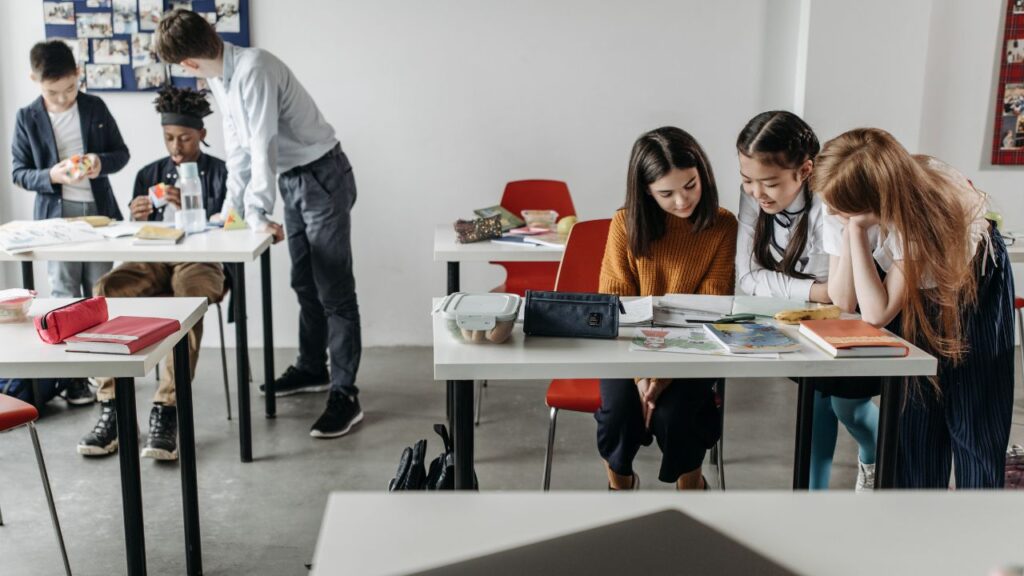
Essential English Language Rules for Clear Communication
Curriculum Modernization
Modernizing the curriculum is vital for students to be prepared for an increasingly tech-dependent and globalized landscape. Both online education and physical learning environments must transition away from rote memorization and toward experience-based, skillful methods of education.
Implementing digital literacy, critical thinking, and job-oriented studies such as artificial intelligence and entrepreneurship—similar to Pakistan’s PIAIC—brings education in alignment with job market requirements. Revamped syllabuses every few years, as called for by the National Education Policy, supporting training for teachers to engage students through interactive and learner-centered lessons can be advantageous to either option.
A modern curriculum serves to enable debates of online education VS physical education, to critically assess the quality and meaning behind either mode of delivery rather than just mode of delivery.
Cultural Shifts
Cultural views really impact how people in Pakistan see education. A lot of folks question the value of online learning, while there are worries about safety in traditional schools, especially for girls. Running campaigns to raise awareness about online degrees can help clear up doubts, showcasing stories of people, like DigiSkills graduates, who found success freelancing worldwide. At the same time, making schools safer with better security and anti-bullying policies could encourage more girls to enroll.
For Pakistan’s education system to thrive, it should combine the best of both online and in-person learning. By investing in a mix of both, upgrading facilities, and updating curricula, we can break down barriers and make sure that all kids have the chance to get quality education, living up to the goals of Article 25-A and paving the way for a brighter future.



Conclusion
The study Online Education VS Physical Education in Pakistan reveals a nuanced yet optimistic picture in which both forms are useful and have their own weaknesses.
On the one hand, online education can provide accessibility, affordability, and flexibility to millions in outlying and underserved areas of Pakistan and beyond, and to vulnerable populations such as girls and working students using some potential platforms like UNICEF’s Learning Passport and the Virtual University.
On the other hand, it has constraints such as underlying infrastructure, lack of promised engagement, and the absence of perception of academic rigor, which are promising areas to be further researched.
Similarly, physical education provides access to social skills, discipline, and totality of development using formal classroom formats, and face-to-face mentorship similar to cadet colleges or public school classes; however, physical education also has limitations, such as access, costs of education, and an outdated curriculum, many people are preppers the inflexibility of education, which does not stretch to meet modern demands.
Comparing online education to physical education shows that neither option fits everyone’s needs in Pakistan. The way forward seems to be a mix of both, using online tools while keeping the personal touch that physical classrooms provide.
For example, blended learning at universities like NUST shows that this combination can work well for flexibility and student involvement.
To accomplish this everyone’s involvement, including government, private sectors, teachers, and parents has to be included in a collaborative design that addresses topics like the digital divide, revised curriculum, and that trust and safety operating in both modalities.
Investments in increased internet accessibility, teacher training, and developing policies for inclusion will be necessary for free education or children everywhere as stated in Article 25-A.
As Pakistan embarks on this exciting and challenging new journey, the question is not simply which is better online versus physical education, but how they will work together as a collaborative framework to deliver meaningful equitable quality learning.
By empowering innovation and addressing the structural barriers, Pakistan can engineer a new education system that prepares its youth to compete in a technology driven global environment whilst recognizing the cultural and social values they have developed in a face to face classroom. This must happen now – Let us jointly invest in finding a balance between Online Education VS Physical Education so we can capitalize on the next generation of Pakistan!
Disclaimer
This article, Online Education VS Physical Education In Pakistan, is meant for general information purposes only. While appropriate endeavors were made to have the correct and relevant information, the article likely reflects perspectives and knowledge at the time of writing and cannot be expected to cover all regional or individual factors.
The authors and publishers are not responsible for any decisions or actions taken as a result of using this information. Readers are encouraged to contact educational professionals or relevant authorities for individual assessments or recommendations about their educational decision-making.
What is the main difference Online Education VS Physical Education in Pakistan?
On the one hand, online education is flexible and affordable, but it lacks engagement and requires internet access. On the other, physical education provides structured, social learning opportunities, but lacks affordability and access in the rural context.
How has COVID-19 changed online learning in Pakistan?
COVID-19 pushed online learning forward with the help of platforms like Zoom and university partnerships with HEC-Coursera. However, constant poor connectivity and a lack of competencies and limited skills exposed the importance of physical educational delivery in the Online Education VS Physical Education debate.
What is the rural Pakistan challenge of online education?
Internet is limited in that only 33% of households are connected, many families lack devices to connect to the internet, and skills are low in digital competencies to carry out online learning and development. Physical education concentrates of structural in school infrastructure accessible to rural communities.
What are the reasons some people still prefer physical education in Pakistan?
Physical education is perceived as teaching students how learning occurs in a structured discipline and social engagement helps develop skills through the students to face-to-face learning, and the trust with qualifications in SSC and HSSC trusted physical education delivery status among the Online Education VS Physical Education.
How can Pakistan make their education system better for the future?
Future proofing Pakistan’s education by implementing blended learning activities and access to good internet coverage, developing higher order design based training for education based teachers, and a fit for purpose curriculum to ensure both processes of Online Education VS Physical Education deliver on the promise of Inclusive quality education.
The Article You May Like
Unlocking Knowledge : The Rise Of Online Education In Pakistan In 2025
What is Education? How I Discovered Its True Meaning Beyond the Classroom
